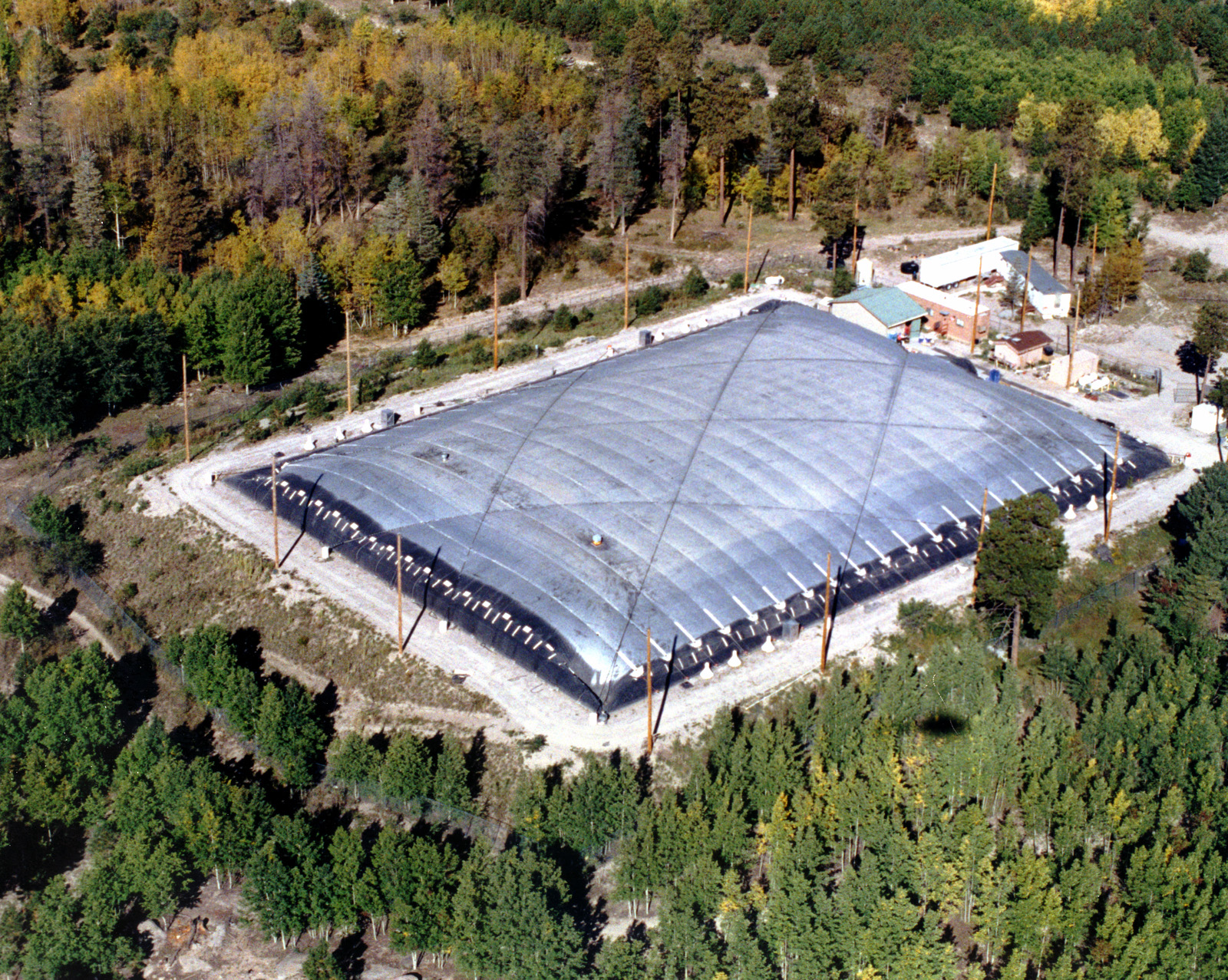
Milagro site, with stabilized cover inflated for access

The Milagro subgroup of SCIPP is a group of about 10 professors, researchers, graduate and undergraduate students for whom the construction, operation and use of the telescope is their principal activity. The telescope itself is on a mountain top in New Mexico, and consists of a large water reservoir equipped with layers of underwater light sensors (photomultiplier tubes). These tubes sense ordinary ultraviolet light which is released when charged particles pass through the water. The charged particles come from the interactions of a single gamma ray impinging on the atmosphere many kilometers higher, and it is a ``miracle" of the technique that information from the photomultiplier tubes, timing the UV light they receive, can recreate the direction from whence the original single gamma ray originated. Over a period of time, the detector builds up a sky map which shows gamma ray sources and their relative strengths and time dependences.
An earlier, simplified version of Milagro showed us that this technique really works, with radiations detected from a likely large black hole in an external galaxy, Markarian 501, as well as some indications of flux from one of a class of transient objects know as gamma ray bursts (GRBs). At lower energies, this prototype even detected a solar flare. Milagro is unique in its potential for detecting TeV photons from GRBs or similarly transient Hawking radiation from small black holes, because it operates day and night in any weather and simultaneously looks everywhere in a very big patch of sky. The Milagro group expects this telescope to complement other powerful instruments in what has been referred to as ``the coming Golden Age of astrophysics".
SCIPP Collaborators: Donald Coyne
Linda Kelley,
David A. Williams